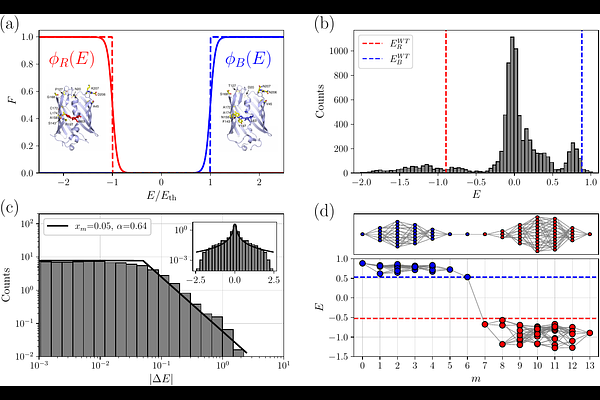Functional bottlenecks can emerge from non-epistatic underlying traits

Functional bottlenecks can emerge from non-epistatic underlying traits
Schulte, A. O.; Alqatari, S.; Rossi, S.; ZAMPONI, F.
AbstractProtein fitness landscapes frequently exhibit epistasis, where the effect of a mutation depends on the genetic context in which it occurs, i.e., the rest of the protein sequence. Epistasis increases landscape complexity, often resulting in multiple fitness peaks. In its simplest form, known as global epistasis, fitness is modeled as a non-linear function of an underlying additive trait. In contrast, more complex epistasis arises from a network of (pairwise or many-body) interactions between residues, which cannot be removed by a single non-linear transformation. Recent studies have explored how global and network epistasis contribute to the emergence of functional bottlenecks - fitness landscape topologies where two broad high-fitness basins, representing distinct phenotypes, are separated by a bottleneck that can only be crossed via one or a few mutational paths. Here, we introduce and analyze a simple model of global epistasis with an additive underlying trait. We demonstrate that functional bottlenecks arise with high probability if the model is properly calibrated. Our results underscore the necessity of sufficient heterogeneity in the mutational effects selected by evolution for the emergence of functional bottlenecks. Moreover, we show that the model agrees with experimental findings, at least in small enough combinatorial mutational spaces.